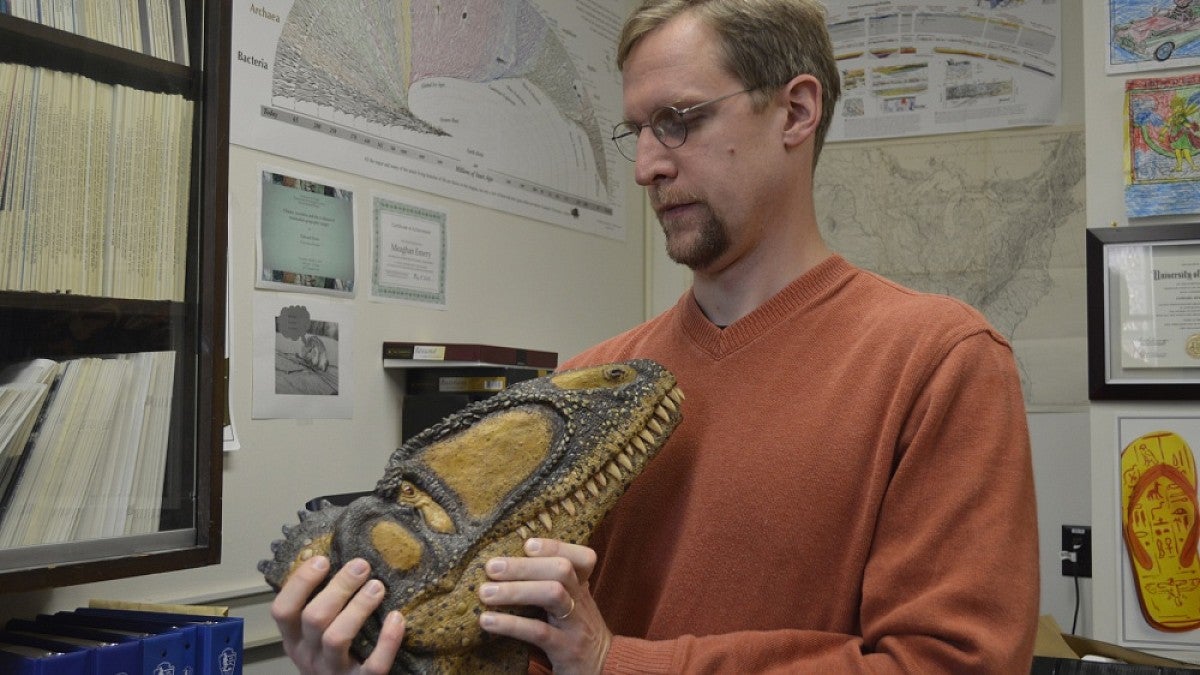Fossils have plenty of stories to tell about the deep past, providing a picture of life on Earth thousands, millions and even billions of years ago. Edward Davis of the UO Museum of Natural and Cultural History will tell you that fossils are key to understanding the future — particularly for managing wildlands.
Davis, along with Stanford University’s Anthony Barnosky and an international team of researchers, suggested in a review paper published in the Feb. 10 issue of the journal Science that effective conservation strategies must look to the fossil record to maintain vibrant ecosystems in the present and future. The more scientists consider past changes, the authors argued, the better they can forecast how species will respond to coming changes and how people can foster their survival.
“In our current context of rapid climate change, conservation efforts need to focus on enhancing the resiliency of ecosystems — something we can do most effectively by preserving the processes that govern wild spaces,” Davis said. “The fossil record provides an important guide to those processes, which in many cases have characterized ecosystems for millions of years, regardless of the species involved.”
The Science paper grew out of a 2015 meeting hosted by the Berkeley Initiative in Global Change Biology, and brought together 41 experts from countries around the world who do conservation and climate policy work.
“There was widespread agreement that we need to shift our conservation paradigms, moving from a pre-Columbian baseline approach, where we’re looking to restore ecosystems to past states, toward a ‘shifting baselines’ approach that accommodates natural responses to changing environments,” Davis said.
Davis’ input on the project related to his conservation paleobiology research, which investigates how changing climates in the Holocene and Pleistocene — dating from 11,700 years ago to some 2.6 million years ago — affected mammals’ distributions and influenced their extinctions.
“The project was a great experience because we had scientists from so many different biological and climate-science disciplines, as well as policymakers and science communicators,” Davis said.
Despite the coauthors’ diverse backgrounds, he said, they were united in the cause of sharing their message about climate change.
“When we talk about scientific consensus it often sounds dry and academic, like a bunch of papers that all agree or a bunch of starched shirts nodding in unison,” Davis said. “This was much more like a club meeting, full of people who are deeply concerned about the realities of climate change and what it means for our future. We wrote the paper as a way to get those concerns across, and to demonstrate the roles that conservation paleobiology can play in saving biodiversity.”
—by Kristin Strommer, Museum of Natural and Cultural History


